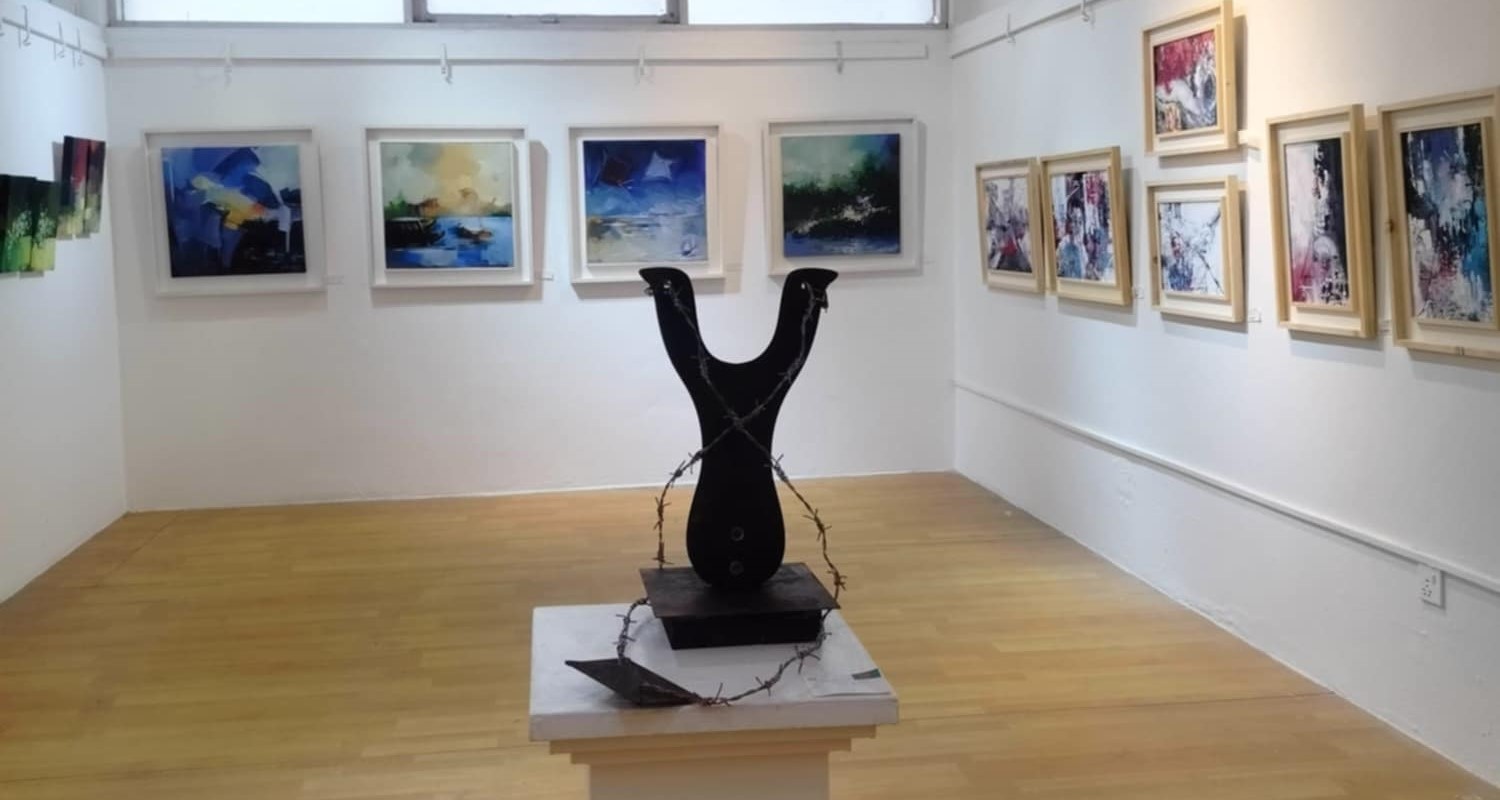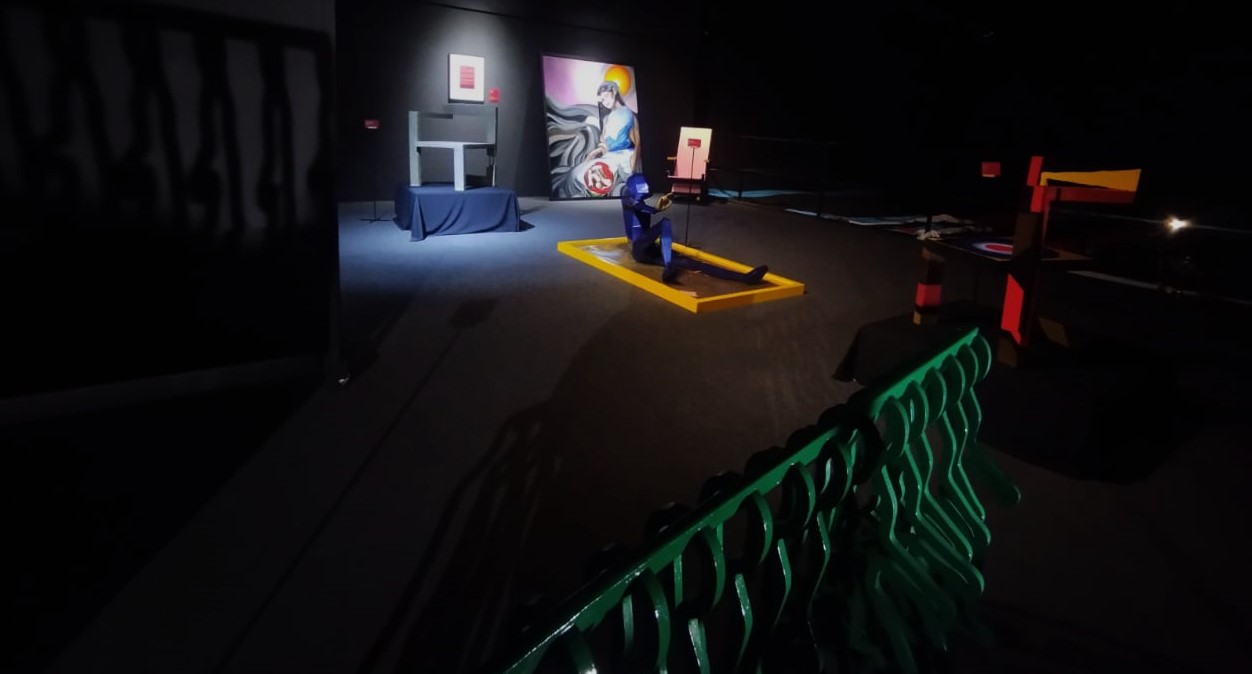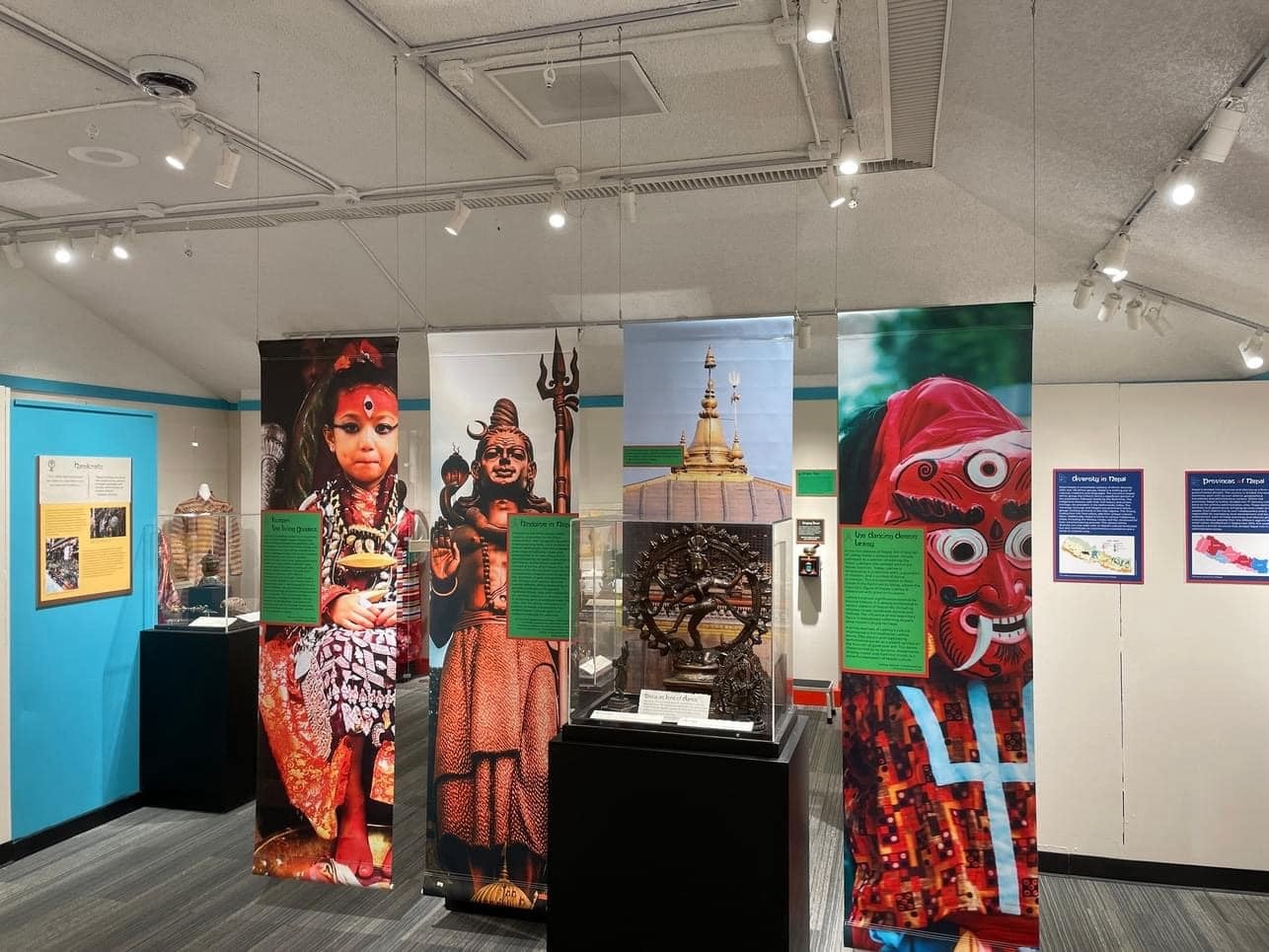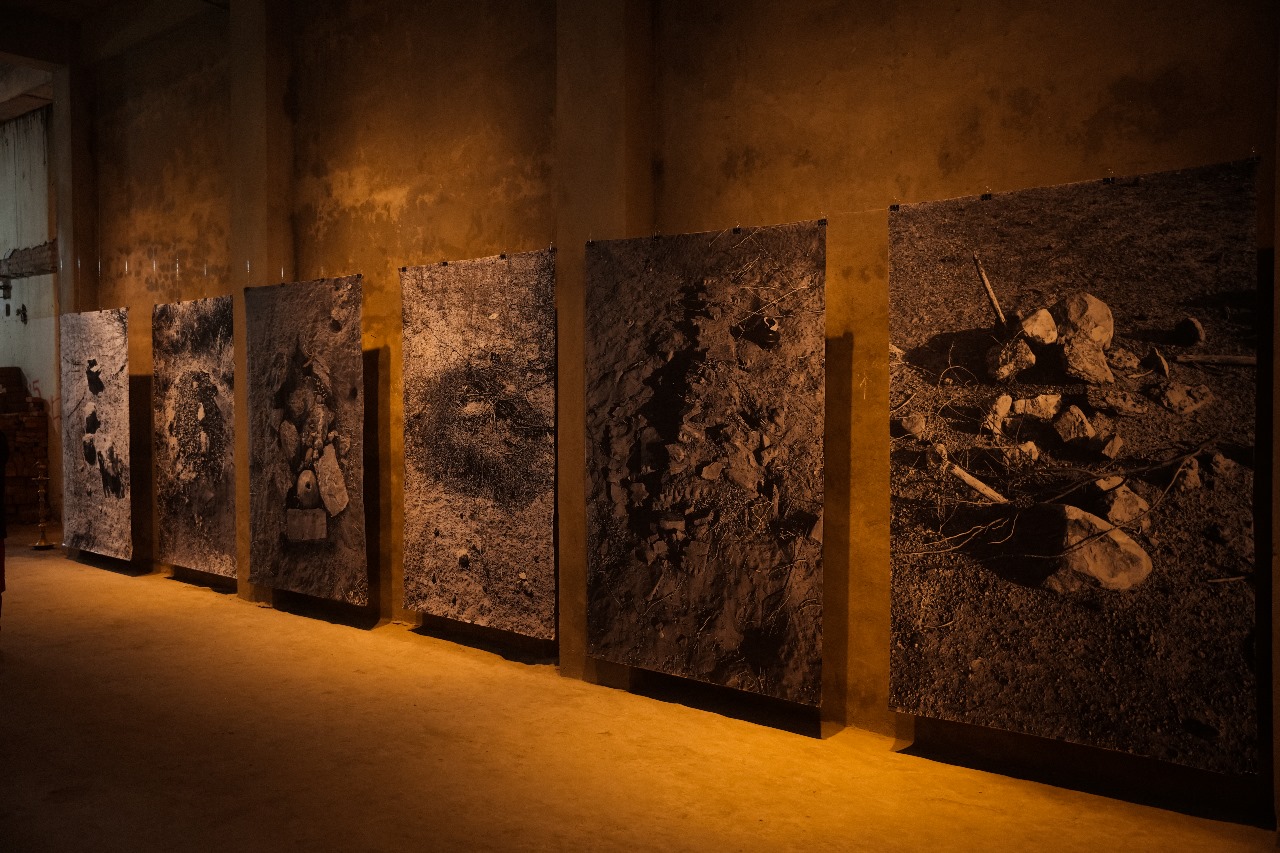
‘Danpheko Katha’, a story of a mountain man and the Himalayan monal around him, was one of Subas Tamang’s most favourite stories during his school days. But as soon as he grew up and learned to think critically, the chapter he found in his brother’s textbook frustrated him as he saw the political agenda of rulers that time.
Tamang has now emerged as a professional fine artist, and expresses dissatisfaction with the textbook in an installation art titled ‘Mahendra Mala’.
Six artists, including Lama, are currently exhibiting similar work that express their desire for alternative discourses of Nepal’s history and culture at a three-week exhibition, ‘Opposite Dreams: The Politics of Local’.
Exploration of alternative histories
“In Danpheko Katha, Lama Dai shoos the bird towards the high mountains and stops it from flying to the plains,” Tamang, who grew up in Morang district of southern Nepal explains, “But, in reality, the mountainous region is the natural habitat for the bird. The story does not mention this. Instead, the Lama Dai has been presented as someone cruel to other creatures.”
“To highlight the hidden political agenda of the education system then, I carved such stories on slates which people in our ethnic group, mostly living in high hills, use to roof houses,” Lama says.
“Because wood carving has also been a medium of established history, I chose this form. I too want to establish my version of the history quite strongly.”

The exhibition, which opened last Saturday at the working studio of ArTree in Tripureshwor of Kathmandu, will continue till November 17. Six artworks, one each by six members of ArTree, a five-year-old collective, have been exhibited. Each work communicates the shared theme of presenting ‘opposite dreams’. However, their media and contexts are different.
For example, Lavkant Chaudhary in his ‘Masinya’ depicts how prejudiced legal system discriminated and dehumanised some ethnic groups.
He uses ‘ghailas’, pots used in household activities of Tharu and some other communities of Nepal, to decode the message. In his creation, clauses of laws introduced before and during the Rana regime are written on the surface of these ghailas—pointing at laws that affected the daily life of these people. The clauses, however, are not seen easily, they are hidden—meaning their manipulation of people’s mind was covert and indirect.
“Those laws categorised citizens into two broad groups—tagadhari and matawali. Among matawalis also, there were two subgroups—masinya and namasinya,” the artist explains the title, “Masinya means anyone who can be ‘destroyed’; or you do not face any action even if they kill them. The group includes Tamang and Tharu communities among others.”
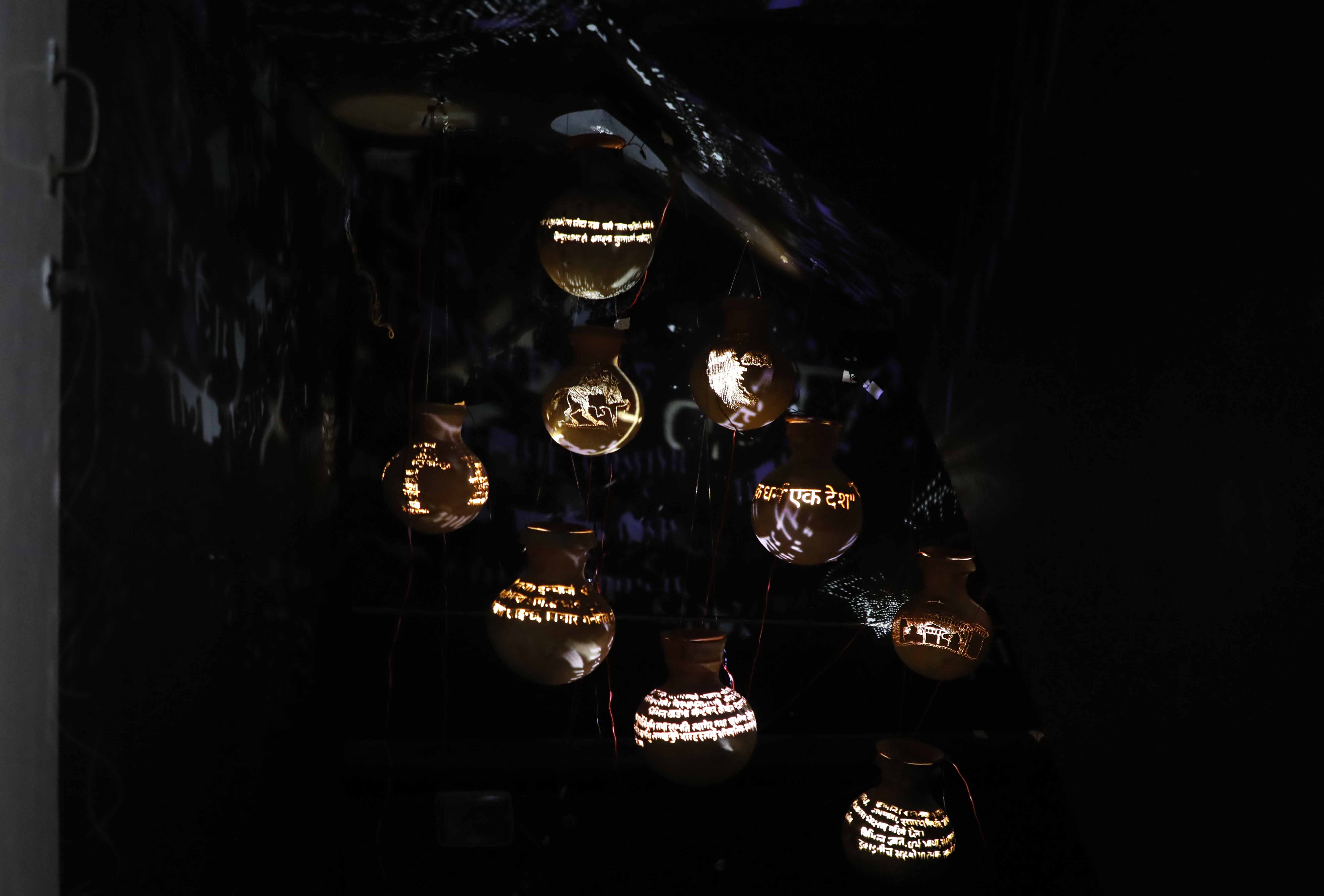
Mekh Limbu’s ‘How I Forgot My Mother Tongue’ and Hit Man Gurung’s ‘How Many Times I Have to Burn It?’ depict the artists’ experiences of being linguistically and politically suppressed. Both of them have used photographs, video and audio as well in their artworks.
Gurung’s work is quite unique in its form. He has burned newspaper clips in a special way so that the letters can be read while it is all ashes. Then, he has photographed the ashes and connected them into a story.
‘No fundamentalist agenda’
Theoretically, a single truth also has multiple faces and each of them is politically charged. Because the title of exhibition also includes ‘politics’, some visitors are likely to get an impression that this project is launched by some political parties or interest groups to fuel their movements.
The six artists belong to different ‘janajati’ communities, and this fact also adds to the suspicion. However, the artists are not ready to accept the charge.
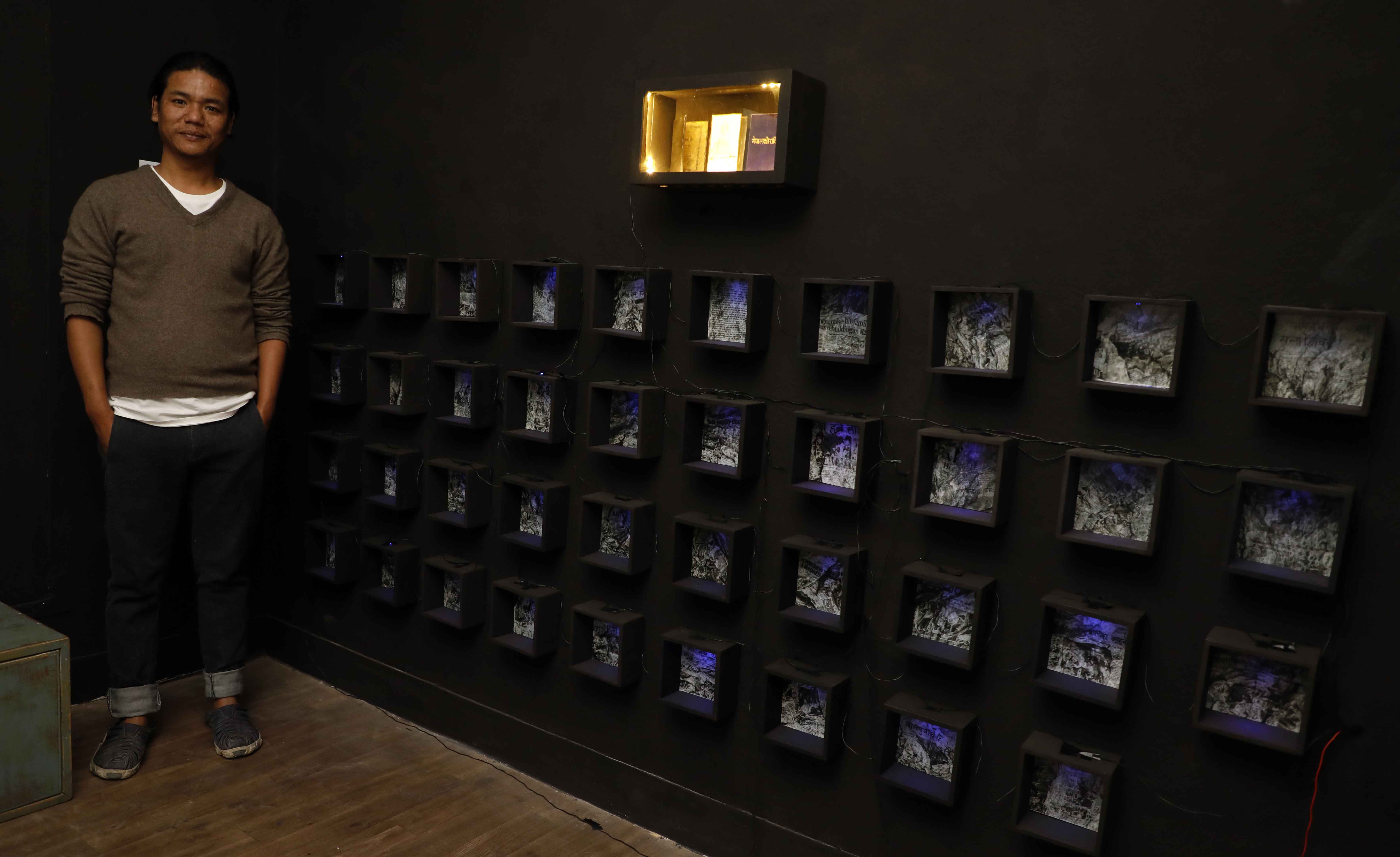
Gurung argues that the absence of non-janajati members in his team is a mere coincidence. “Of course, we do not make arts that are meaningless. All our artworks are about sociopolitical and cultural causes, but we are not fundamentalists. We are against all forms of fundamentalism as we believe each others’ dreams are opposite.”
Gurung cites two other artworks being exhibited at the show—’Cultural Colonisation’ by Sheelasha Rajbhandari and ‘Death of Civilisation’ by Bikas Shrestha—to prove that their project is not a janajati rights movement.
Rajbhandari’s installation art is a depiction of foreign cultures’ attack on Nepal. She has used traditional Nepali attires and patched tags of foreign brands on their surfaces to show how ‘other’ cultures in different forms have deteriorated art, beauty, and richness of Nepali culture.

“Many historical and religious texts talk about the beauty of Nepali textiles, which is evidence that we were good at this industry. But, it collapsed in a very short time,” the artist explains, “Now, we have to search for reasons behind such change. We have to look at the system of standardisation that we are used to today, and create opposite dreams.”
Likewise, Shrestha’s project shows the impacts of industrialisation and ‘development’ on historical and archaeological heritage sites, durbar squares of Kathmandu in particular. The impression of tyres on the map carved on a wooden surface rightly communicates the message.
Heading to an international audience
These six artworks are being exhibited in an international event in Austria next year.
Christian Schicklgruber, Director of Welt Museum Wien in Vienna, is currently in Kathmandu to prepare for the exhibition that he plans to begin on April 10. Schicklgruber says he is working on this project for past three years to showcase contemporary Nepali artworks in front of the European audience.

The event, which will last for six months, will exhibit a total of 85 artworks including paintings, installation arts, scriptures and videos from 25 Nepali art studios. ArTree is just one of them.
Rajbhandari claims it will be the biggest international forum that has even been available for Nepali artists.
Therefore, Tamang is excited about the exhibition. While his ‘Danpheko Katha’ will travel to Vienna next year, danphes of his mountains will not follow the story. However, no one will accuse Tamang of chasing away the danphes from Vienna. He will be free of any charge that his Lama Dai had to face years ago—for he has created an ‘opposite’ story on the stones that will last for ages.







